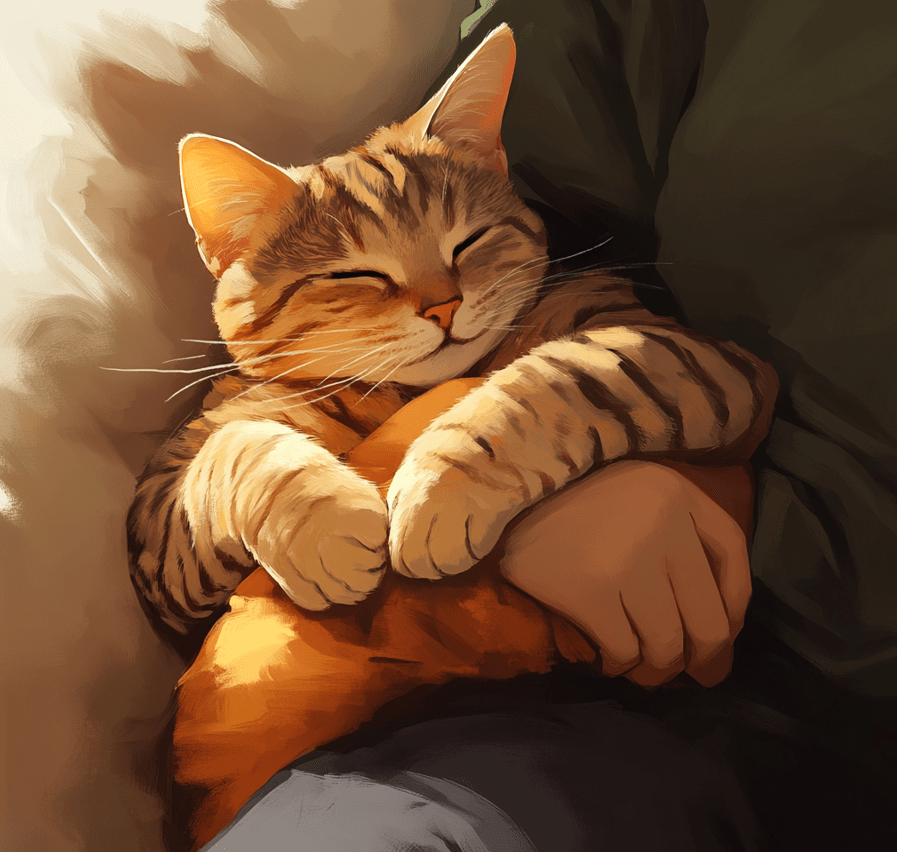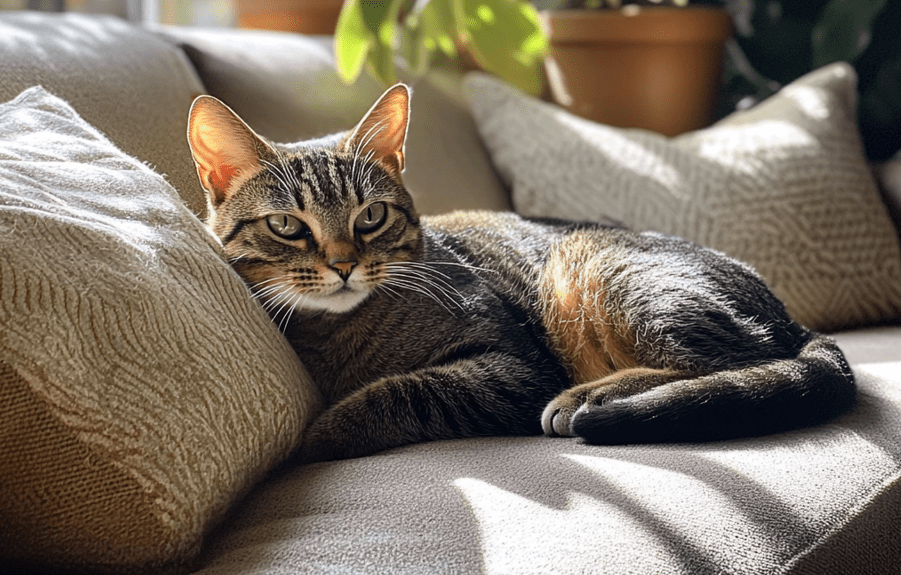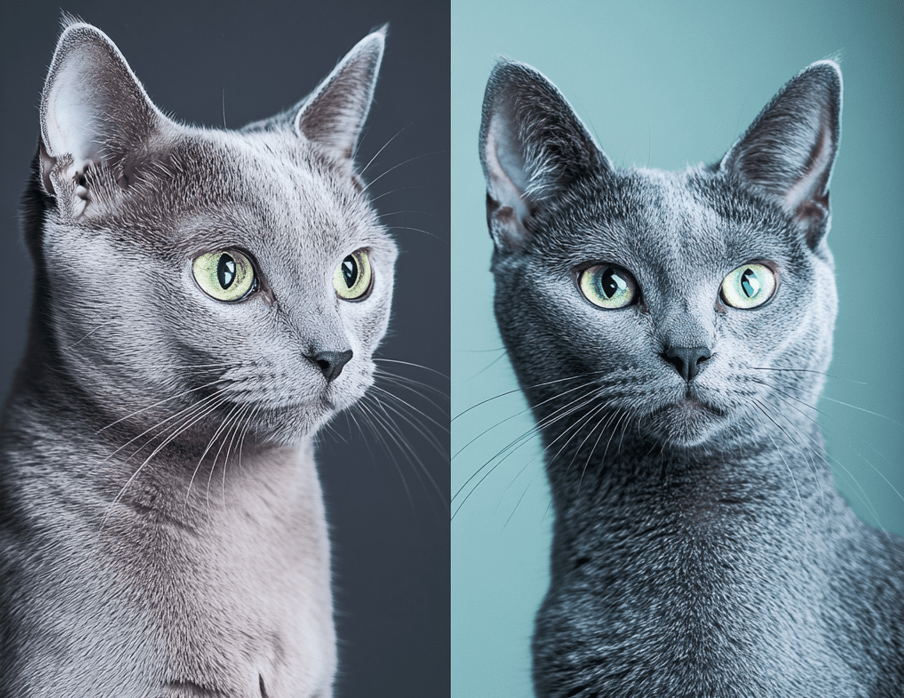
Domestic Shorthair allergies can be a distressing issue for both cats and their owners. These beloved, short-coated felines are prone to sensitivities that manifest as itching, sneezing, or digestive upset. Whether triggered by food or environmental factors, allergies in Domestic Shorthairs require careful management to ensure your cat’s comfort and health. This comprehensive guide explores the causes, symptoms, and solutions for Domestic Shorthair allergies, comparing food-related and environmental triggers. By understanding these differences, you can take proactive steps to help your cat thrive.
Understanding Domestic Shorthair Allergies
Domestic Shorthairs are not a specific breed but a category of mixed-breed cats with short, dense coats. Their genetic diversity makes them hardy but doesn’t exempt them from allergies. Allergies occur when a cat’s immune system overreacts to a substance, known as an allergen. For Domestic Shorthairs, allergens typically fall into two categories: food-based and environmental. Identifying the source is crucial, as symptoms like scratching, skin irritation, or respiratory issues can overlap.
Common Symptoms of Allergies in Domestic Shorthairs
Recognizing allergy symptoms is the first step toward relief. Symptoms may include:
Skin Issues: Excessive scratching, redness, scabs, or hair loss, often around the face, ears, or belly.
Respiratory Problems: Sneezing, wheezing, or watery eyes, particularly with environmental allergies.
Digestive Distress: Vomiting, diarrhea, or flatulence, commonly linked to food allergies.
Ear Infections: Recurrent ear infections or head shaking, often tied to food sensitivities.
Behavioral Changes: Irritability or lethargy due to discomfort.
If your Domestic Shorthair exhibits these signs, consult a veterinarian to pinpoint the cause and develop a treatment plan.
Food Allergies in Domestic Shorthairs
Food allergies account for a significant portion of allergic reactions in Domestic Shorthairs. Unlike food intolerances, which cause digestive issues without immune involvement, food allergies trigger an immune response. Common culprits include proteins like chicken, beef, fish, or dairy, as well as grains or additives in commercial cat foods.

Causes of Food Allergies
Food allergies develop when a Domestic Shorthair’s immune system misidentifies a dietary component as harmful. Over time, repeated exposure to the allergen intensifies the reaction. Factors contributing to food allergies include:
Dietary Proteins: Chicken, beef, and fish are frequent triggers due to their prevalence in cat food.
Grains and Fillers: Corn, wheat, or soy can cause sensitivities in some cats.
Artificial Additives: Preservatives, dyes, or flavorings may provoke allergic responses.
Genetic Predisposition: Some Domestic Shorthairs may inherit a tendency toward food sensitivities.
Symptoms of Food Allergies
Food allergies often manifest as dermatological or gastrointestinal issues. Look for:
-
Itchy skin, especially around the head and neck.
-
Hair loss or hot spots from excessive grooming.
-
Chronic ear infections or waxy buildup.
-
Vomiting or diarrhea after meals.
-
Swollen paws or inflamed skin.
These symptoms may appear gradually, making it challenging to link them to food without veterinary testing.
Diagnosing Food Allergies
Diagnosing food allergies requires an elimination diet, considered the gold standard by veterinarians. This process involves:
Switching to a Novel Protein Diet: Feed your Domestic Shorthair a food with a protein source they’ve never eaten, such as duck, venison, or rabbit. Hydrolyzed protein diets, where proteins are broken down to be unrecognizable to the immune system, are another option.
Strict Dietary Control: Avoid treats, table scraps, or flavored medications during the trial, which typically lasts 8–12 weeks.
Monitoring Symptoms: If symptoms improve, the original diet may be reintroduced to confirm the allergen.
Veterinary Guidance: Work with a vet to ensure nutritional balance and accurate diagnosis.
Blood or skin tests for food allergies are less reliable in cats, so elimination diets remain the preferred method.
Managing Food Allergies
Once identified, managing food allergies involves:
Avoiding Trigger Foods: Select hypoallergenic or limited-ingredient diets tailored to your cat’s needs.
High-Quality Nutrition: Choose foods with natural ingredients and minimal additives to reduce irritation.
Regular Monitoring: Watch for recurring symptoms, as allergies can evolve over time.
Supplements: Omega-3 fatty acids or probiotics may support skin health and digestion.
Transitioning to a new diet should be gradual to prevent digestive upset. Mix the new food with the old over 7–10 days, increasing the proportion of the new food daily.
Environmental Allergies in Domestic Shorthairs
Environmental allergies, also known as atopy or atopic dermatitis, occur when a Domestic Shorthair reacts to airborne or contact allergens. These allergies are often seasonal but can persist year-round depending on the trigger.

Causes of Environmental Allergies
Environmental allergens are diverse and include:
Pollen: Grass, tree, or weed pollen can trigger seasonal allergies.
Mold Spores: Found in damp areas, mold is a common indoor allergen.
Dust Mites: Microscopic mites in bedding, carpets, or furniture can cause year-round symptoms.
Fleas: Flea saliva is a potent allergen, leading to flea allergy dermatitis.
Chemicals: Household cleaners, perfumes, or grooming products may irritate sensitive cats.
Domestic Shorthairs living in urban or pollen-heavy areas may be more susceptible to environmental allergies.
Symptoms of Environmental Allergies
Environmental allergies primarily affect the skin and respiratory system. Common signs include:
-
Intense itching, particularly on the face, paws, or belly.
-
Red, inflamed skin or lesions from scratching.
-
Sneezing, coughing, or nasal discharge.
-
Watery or red eyes.
-
Secondary infections from broken skin.
Unlike food allergies, environmental allergies may wax and wane with seasons or exposure to specific environments.
Diagnosing Environmental Allergies
Diagnosing environmental allergies involves ruling out other causes, such as fleas or food sensitivities. Veterinary approaches include:
Skin or Blood Tests: Intradermal skin testing or serum IgE testing can identify specific allergens, though results may vary in accuracy.
Flea Control: Ensuring rigorous flea prevention to exclude flea allergy dermatitis.
Symptom Patterns: Tracking when symptoms occur (e.g., spring vs. winter) helps identify seasonal triggers.
Environmental History: Noting changes in your cat’s environment, like new bedding or cleaning products, can provide clues.
A veterinarian may recommend allergy testing if symptoms persist despite flea control and dietary changes.
Managing Environmental Allergies
Managing environmental allergies focuses on reducing exposure and alleviating symptoms:
Minimize Allergen Exposure:
1.Use air purifiers with HEPA filters to reduce pollen and dust.
2.Wash bedding and cat toys regularly in hot water to eliminate dust mites.
3.Vacuum frequently with a pet-safe vacuum to trap allergens.
Flea Prevention: Apply vet-recommended flea preventatives year-round to prevent flea allergy dermatitis.
Bathing: Regular baths with hypoallergenic shampoos can soothe skin and remove allergens. Avoid over-bathing, which can dry out skin.
Medications:
1.Antihistamines or corticosteroids may reduce itching and inflammation, but long-term use requires veterinary oversight.
2.Immunotherapy (allergy shots or oral drops) can desensitize your cat to specific allergens over time.
Environmental Adjustments: Keep your home free of strong fragrances, cigarette smoke, or chemical cleaners.
Creating a low-allergen environment can significantly improve your Domestic Shorthair’s quality of life.
Food vs. Environmental Allergies: Key Differences
Distinguishing between food and environmental allergies is critical for effective treatment. Here’s a comparison:
|
Aspect |
Food Allergies |
Environmental Allergies |
|---|---|---|
|
Primary Triggers |
Dietary proteins, grains, additives |
Pollen, dust mites, mold, fleas |
|
Common Symptoms |
Skin issues, digestive problems, ear infections |
Itching, respiratory issues, seasonal symptoms |
|
Diagnosis Method |
Elimination diet |
Skin/blood tests, environmental history |
|
Management |
Dietary changes, hypoallergenic foods |
Allergen avoidance, medications, immunotherapy |
|
Onset |
Can develop at any age |
Often appears in young adulthood |
|
Seasonality |
Non-seasonal |
Often seasonal, but can be year-round |
Both types of allergies may coexist, complicating diagnosis. A veterinarian can help untangle overlapping symptoms through systematic testing.
Proactive Steps for Domestic Shorthair Allergy Management

Whether your Domestic Shorthair suffers from food or environmental allergies, proactive measures can minimize discomfort:
Regular Veterinary Checkups: Annual or biannual visits allow early detection of allergy-related issues.
Grooming Routine: Brush your cat regularly to reduce dander and distribute natural oils, which supports skin health.
Nutritional Balance: Feed a high-quality, balanced diet to strengthen your cat’s immune system.
Stress Reduction: Stress can exacerbate allergies. Provide a calm environment with enrichment like toys or scratching posts.
Allergy Tracking: Keep a journal of symptoms, diet, and environmental changes to identify patterns.
When to Seek Veterinary Help
Consult a veterinarian if your Domestic Shorthair shows:
1.Persistent scratching or skin lesions.
2.Chronic vomiting or diarrhea.
3.Respiratory distress or frequent sneezing.
4.Symptoms that worsen despite home management.
A vet may recommend advanced diagnostics, such as biopsies for severe skin issues or referrals to a veterinary dermatologist.
Living with a Domestic Shorthair with Allergies
Caring for a Domestic Shorthair with allergies requires patience and dedication, but the rewards are worth it. With proper management, most cats can lead happy, comfortable lives. Here are tips for success:
Stay Consistent: Adhere to dietary restrictions or flea prevention schedules to prevent flare-ups.
Educate Yourself: Learn about your cat’s specific triggers to make informed decisions.
Communicate with Your Vet: Share observations and concerns to tailor treatments effectively.
Create a Safe Space: Designate a low-allergen area in your home where your cat can relax.
Conclusion

Domestic Shorthair allergies, whether caused by food or environmental factors, can be challenging but manageable with the right approach. By understanding the differences between food and environmental allergies, recognizing symptoms, and working closely with a veterinarian, you can help your cat live comfortably. From elimination diets to allergen-free environments, the strategies outlined in this guide empower you to tackle Domestic Shorthair allergies effectively. With dedication and care, your feline companion can enjoy a healthier, happier life free from the discomfort of allergies.




